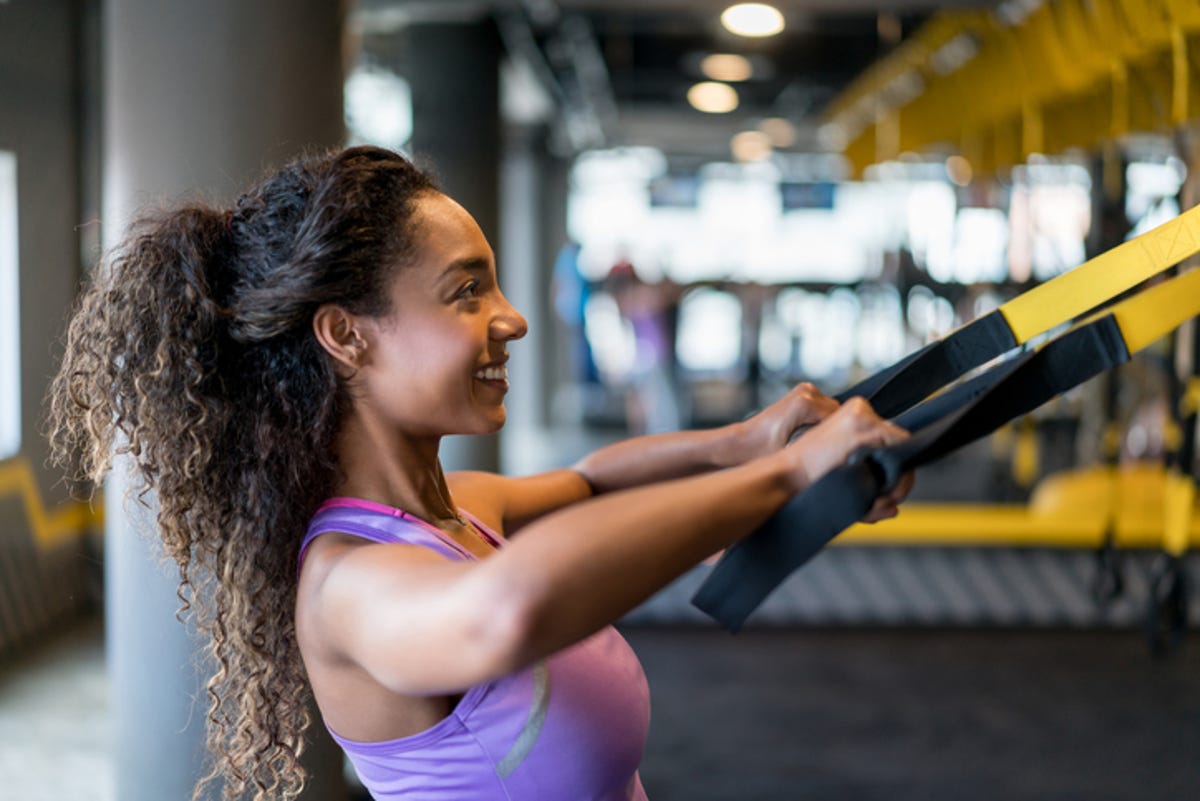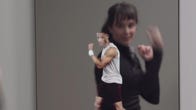Exercise has many benefits besides just physical. You may know that working out boosts certain “happy” hormones like endorphins, but working out goes beyond a simple mood pick-me-up — it can help manage your stress and worry longterm. And with all the chaos of the world today, from high gas prices to inflation and the general news cycle, it’s important to find effective ways to feel more at-peace.
While yoga usually tops the list of stress-relieving exercises, it’s not the only option for helping you find your zen. In reality, any type of workout can help you feel better. The options below aren’t necessarily “chill” workouts, but they’ll still leave you dripping in sweat and feeling more relaxed than when you started.
Some experts say that intense workouts, such as High-Intensity Interval Training, can help you build mental strength, which can allow you to cope with stress and other challenges. Just ask Chris Stockel, founder of Mind Body Project, a fitness studio in New York that combines HIIT and meditation into one 50-minute class. Stockel found HIIT helpful during a personal battle with stress and anxiety. “It’s so physically challenging that it actually forces my brain to stop overthinking and remain laser-focused on the task at hand. It makes me feel entirely present,” said Stockel.
Keep reading below to find out how HIIT and other workouts besides yoga can help you reduce stress and feel calmer.
Workouts that can help reduce stress
HIIT
The thing about HIIT workouts is that they’re intense but quick, making them great for fitting into tight schedules. The other benefit when it comes to stress is that doing an intense workout for a short period of time requires a ton of focus, which keeps you from thinking about what’s stressing you out, as Stockel noted above.
“The way you move keeps your mind strong, which combats stress,” says Bryna Carracino, fitness trainer and founder of Rehab NYC.
For stress management, Carracino likes workouts that focus on conditioning the body versus ones requiring you to count reps, like timed HIIT intervals. “So the mind can truly focus on the moment. Using functional pieces of equipment like kettlebells, dumbbells, TRX straps puts the body in a more proprioceptive environment,” explains Carracino. Proprioception is the ability to sense your own body’s position and movements. “The more the body lives there the more cognitive health is improved,” says Carracino.
Strength training
A 2020 study found that strength training on a regular basis had a positive impact on anxiety levels and worry symptoms in young adults. There’s plenty of evidence to show that exercise in general makes you happier and can support better mental health, but this study focused specifically on strength training, which tells us even more about how different types of exercise can affect your mind.
“Any form of physically strenuous exercise releases endorphins, which are chemicals produced by the body to relieve stress and pain,” says Stockel. “More specific to strength training, a bodyweight and/or weighted strength program has been proven to build self-confidence, improve your mood, help you relax and improve your sleep,” says Stockel.
Bottom line: Science says exercise can help reduce stress and boost your mood. What is considered fun or relaxing can vary from person to person, so add in elements of fun or zen to any workout, depending on what works for you. For example, maybe a dance class is fun for one person, but anxiety-inducing for another.

TRX straps are suspension training tools you can use at home or in a gym for strength training.
Getty Images
Try this HIIT and strength workout for stress at home
Carracino designed the HIIT and strength-building workout below to help you destress and get a great workout in.
“For this HIIT workout you’ll need a fitness/yoga mat, a set of light and medium dumbbells,” says Carracino. You can also use a TRX strap if you have one, but if not, just skip the TRX move and do regular push-ups.
Do the following exercises for 1 minute each (set a timer to help track). For 50 seconds of each exercise you work, followed by 10 seconds of rest to reset. Between each set (one to two sets for beginners, three to four sets for advanced), take a 30-second recovery break. To level up your workout, try increasing your weights when you make it to set three or four of the exercises.
Dumbbell dead bugs: Lie on your back. Hold one dumbbell in each hand. Arms are straight over chest with dumbbells facing each other. Legs should be at a 90-degree angle, with flexed feet. This is your start position. Extend left leg forward and right arm back over head at the same time. Back to start position. Alternate to the other side. Repeat.
Beast: Hold in table-top position: Wrists, elbows, shoulders aligned. Knees and hips stacked. This is the start position. Lift your knees off the ground. Slightly press the knees out and hold for 5 seconds. Back to start position. Repeat.
TRX push-ups: Place your hands in the upper cradle. Arms are straight. This is the start position. Lower your body until your arms are at a 45-degree angle. Keeping your elbows aligned with the rib cage. Engage your chest and push your arms back to start position. Repeat.
No TRX? No worries. Do the same positioning as the TRX strap but place your hands on the edge of a couch, bench or chair. Make sure these are pressed up to a secure surface like the wall.
Renegade rows: Come to push-up position with your shoulders stacked over wrists. Keep your feet as wide as your mat. This is the start position. Hold a dumbbell in each hand and row the right side, pulling the right elbow into your back pocket. Place your arm back to start position. And switch to the left side row. Back to start position. Repeat.
Skier swings: Start standing. Hold light dumbbells by your side in a hammer grip position. Hinge through the hip and push your booty back. Extend arms behind you, keeping arms parallel to the side of your body. Drive dumbbells forward by driving hips forward. Pushing the weight to shoulder level. Engage booty. Repeat.
Dumbbell front raise lateral lunge: Start in a standing position with feet together and one light dumbbell by your left side. This is the start position. Right leg laterally lunges to the right. While in the lunge raise the left arm out in front, palm facing up. Back to start position. Stay with the same side for 25 seconds. Then switch to the other side.
Burpees: Start lying on your chest with hands resting under your shoulders. Palms flat. Keep all 10 toes pressed into the ground. This is the starting position. Press into the push-up position. Jump into a squat position (feet are on the outside of your hands). Jump squat. Step your feet back into the push position. Lower to start position. Repeat.
Forearm plank: Start in push-up position and lower onto your forearms, with shoulders stacked over elbows. Keep the largest muscle groups engaged — the back, chest, glutes and quadriceps. As soon as you feel yourself losing engagement in any of those muscle groups, lower your knees to the ground. Reset. Come back up into a plank hold.
More fitness recs
The information contained in this article is for educational and informational purposes only and is not intended as health or medical advice. Always consult a physician or other qualified health provider regarding any questions you may have about a medical condition or health objectives.


